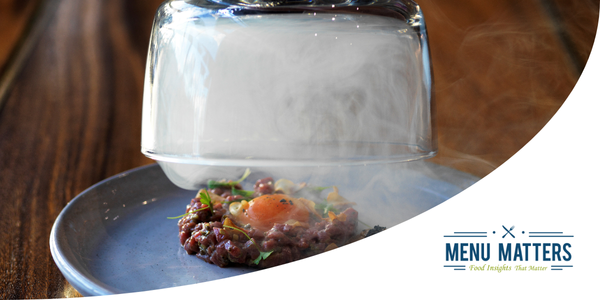
“White tablecloth.” At one time these two words defined luxury and fine dining, but today they may conjure up less positive associations in consumers: stuffy, expensive, old-fashioned. But consumers still want luxury experiences, of course. They just want them to look a little different.
Today even the most high-end, luxury restaurants often have a casual edge. The marketing copy for expensive steakhouses will use terms like “unpretentious” and “approachable.” At Chicago’s Alinea, which has three Michelin stars and where dinner for one starts at $325, guests laugh in high-pitched voices after eating edible helium-filled balloons.
Indeed, while at one time a clear separation between the back-of-house and front-of-house was essential to fine dining, today’s foodie diners want to see the sausage being made. The “chef’s table” in the kitchen is the most expensive option. They want to know the face behind the menu and the farm behind the ingredients. In fact, over half of consumers (56%) say seeing the face (chef, farmer, etc.) behind a product or menu item makes them more likely to buy it.
In today’s screen-driven world, that type of human connection is itself a little luxury. Today’s higher-end experiences are going all-in on hospitality and experience in order to differentiate themselves from kiosk-driven fast food concepts. “Human connection is now a luxury good,” said one New York Times opinion writer late last year.
But while the dining space and experience has gotten so much more casual, higher-end restaurants have found two clear points of differentiation – ingredients and technique. Consumers don’t just focus on price when valuing an option, they consider price and quality (57% of consumers say price contributes to the value of an item, while 55% say quality). Premium ingredients with clear quality-driven attributes can earn their luxurious price tag in even the most basic or casual environment. (Case in point: the $130 caviar-topped bagel and cream cheese we recently came across at a food court in Las Vegas.)
So while fine dining may have gotten a lot more casual (even those white tablecloth restaurants may feature funky music, bright murals, and fun service), there are still opportunities to give consumers the luxury touches they’ll always crave: premium ingredients, artful execution, and that human touch.
Editor’s Note: Our ambassador chefs in fine dining echo these insights from their perspective, and share how they lean into the bespoke qualities of Aussie meats and their storytelling to deliver luxury to their guests. It’s an excellent and quick companion read!

